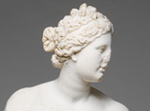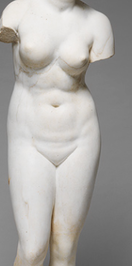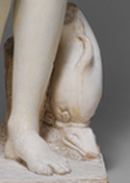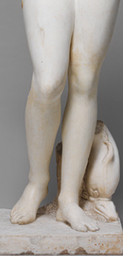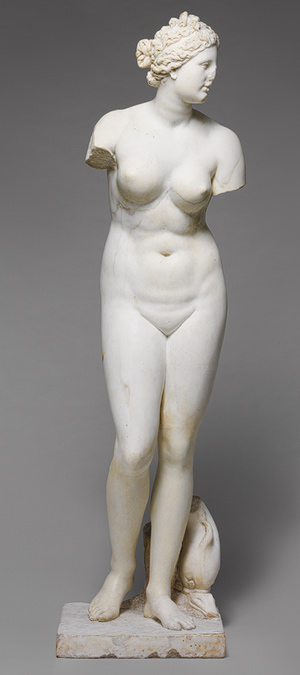Basic Gist
It is said that god crafted mankind in his image, mankind has now sculpted the earth into his. The advent of sculptures is not limited to second wave civilizations, but it is where sculptures began to become something more than art. Sculptures represented the very essence of a civilization, from the pose of the subject, to the state of the body, and to the action it was sculpted doing. Sculptures represented the values, "emotions", and general lifestyle of a civilization. From the regal marble statues of Rome to the hasty stone statues of Mesoamerica every sculpture tells the story of a society long lost to time and will continue to stand as a monument to their beliefs.
Case Study
The statue is depicting Aphrodite, the goddess of love and beauty. Looking at this sculpture as a whole one can see that ancient Greece religion by taking the time to sculpt the goddess out of marble which would take a very long time since marble was time consuming to sculpt from and taking all this time to work on a single piece of art means that religion was of top priority to the people in this early society. The face of Aphrodite is serious invoking fear to all those that worship the Gods. Noticing the facial expression on her shows us that the Gods were more feared then loved by the people worshiping them. Displeasing the Gods may have resulted in harsh punishment, so making every detail of this sculpture correct to portray the beauty of the goddess was crucial. By looking at this sculpture of the Goddess we can see that Rome and Greece were polytheistic. This statue was one of the first to depict the Goddess in her human form. Sculpting Aphrodite shows the emphasis that these ancient people had fascination with the beauty, proportion and grace of the female body. Since the Goddess is shown naked we can also the promiscuity of the Greeks and Romans. The people of these societies were also intrigued by the movement of the human body, one could infer this by looking closely at the legs of the sculpture, they are made to look like they are moving or walking away or toward something. By the vase sculpted next to Aphrodite’s feet one can notice that she is getting out of the bath. This shows us the sophistication of both Greek and Roman cities, both of them having public bath houses. The sculptor would never have been able to show the Goddess taking a bath if this was not a large part of their city structure and lifestyle.
